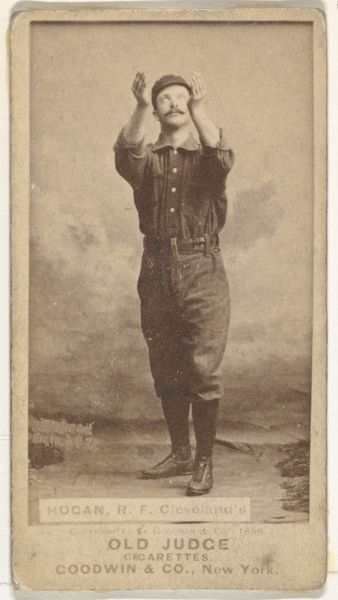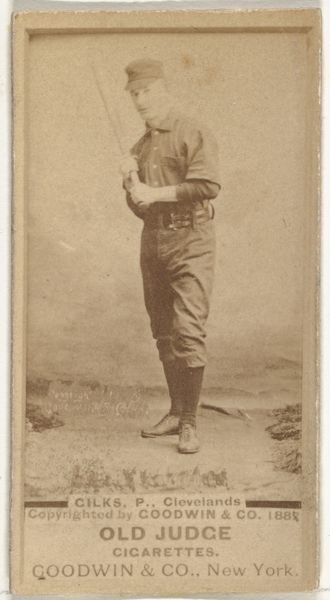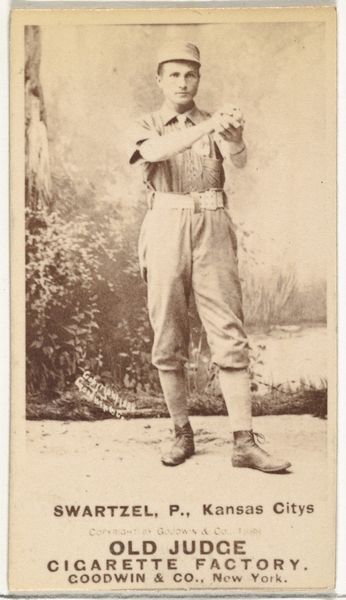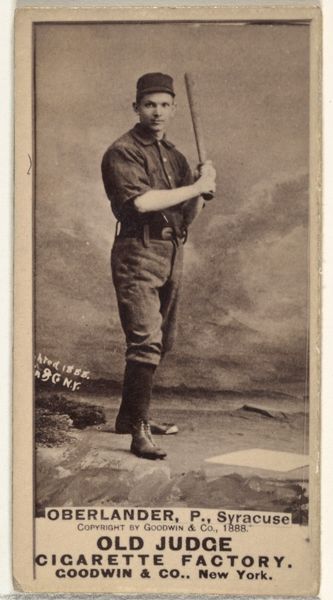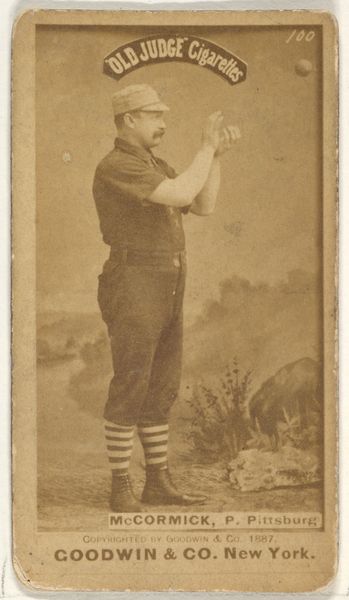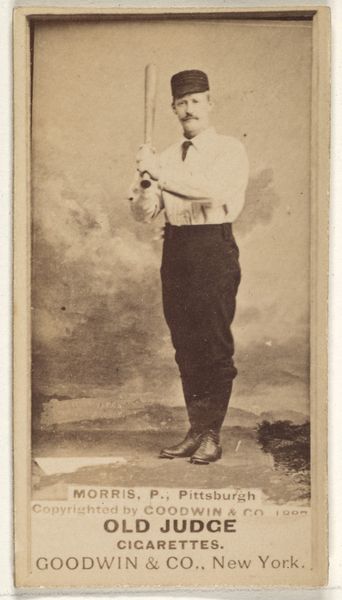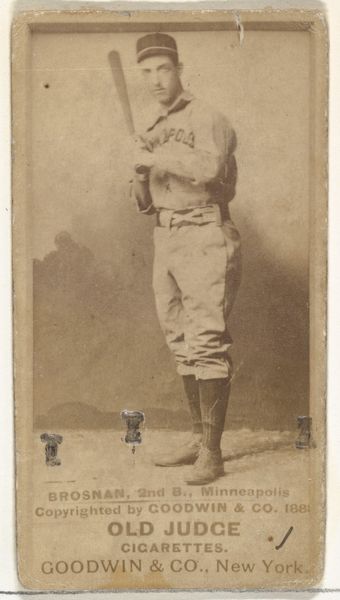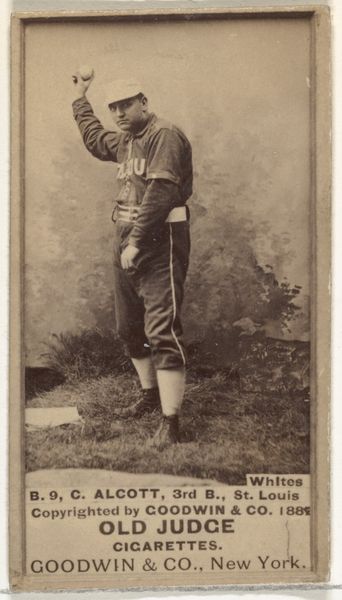
William Theodore "Billy" Crowell, Pitcher, Cleveland, from the Old Judge series (N172) for Old Judge Cigarettes 1888
0:00
0:00
print, photography, albumen-print
#
portrait
# print
#
impressionism
#
baseball
#
photography
#
historical photography
#
men
#
athlete
#
albumen-print
Dimensions: sheet: 2 11/16 x 1 3/8 in. (6.9 x 3.5 cm)
Copyright: Public Domain
Curator: The albumen print before us features William Theodore "Billy" Crowell, a pitcher for Cleveland, taken around 1888 by Goodwin & Company as part of the "Old Judge" series to promote cigarettes. The photo, preserved at the Metropolitan Museum of Art, captures a moment in baseball history and popular culture. Editor: It's striking how posed he is. So different from today’s sports photography, which tries to catch action and intensity. This feels more like a formal portrait than an athletic endorsement, despite the uniform and baseball. He even clutches a baseball. Curator: Precisely. These cards were distributed within cigarette packs, making them incredibly accessible. They reveal the increasing commercialization of sports, intertwining athletic figures with consumer products. The use of an albumen print provides a sepia tone which lends the work a veneer of established history. Editor: I see how this blend speaks to broader cultural shifts of the time. Baseball emerging as a national pastime, brands jostling for attention, celebrity culture beginning to take root. Looking closely, I notice this melancholic affect within what would seem a heroic attempt at recording baseball history. This card also presents a carefully constructed image—he's almost self-consciously presenting himself as a subject. Curator: Yes, notice how the Old Judge Cigarettes logo and text are intentionally positioned for maximum visibility? Beyond that, Crowell's uniform is visually symbolic. In its moment it became a recognizable marker of team and profession. Editor: The picture isn't just capturing a moment, it’s creating a perception. He is quite serious and direct in this expression of purpose. Curator: Looking at "Billy" Crowell through a psychological lens, one can also argue about a form of collective aspiration to become associated with success in the moment when such players are coming to represent the image of youth and talent. This work speaks to the American dream as much as cigarettes and baseball. Editor: Seeing how photography, commerce, and sports became intertwined allows for us to observe this historical baseball player from a contemporary perspective, questioning what he and others signify beyond just one era or image. Curator: Agreed. Reflecting on the image's place within art history reveals its surprising richness as a document of cultural aspirations as much as a simple advertisement. Editor: It encourages consideration of not just the what of the photo, but also the why.
Comments
No comments
Be the first to comment and join the conversation on the ultimate creative platform.
